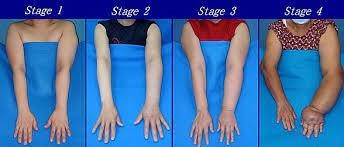A nurse is teaching a client newly diagnosed with osteoarthritis (OA) about drugs used to treat the disease. For which drug does the nurse less likely plan health teaching?
Cyclobenzaprine hydrochloride
Ibuprofen
Duloxetine
Acetaminophen
The Correct Answer is A
Choice A rationale: While it can be used for muscle spasms associated with musculoskeletal conditions, it's not primarily used as a first-line treatment for osteoarthritis pain and inflammation.
Choice B rationale: Ibuprofen is a nonsteroidal anti-inflammatory drug (NSAID) commonly used to relieve pain and inflammation associated with osteoarthritis.
Choice C rationale: It's a medication used for chronic pain conditions, including OA- related pain.
Choice D rationale: Often used for mild to moderate OA pain relief, it's a common medication for OA management.
Nursing Test Bank
Naxlex Comprehensive Predictor Exams
Related Questions
Correct Answer is B
Explanation
Choice A rationale: Cerebral motor cortex primarily controls voluntary movements, not autonomic functions like respiration, heart rate, and blood pressure.
Choice B rationale: The brain stem controls vital functions like respiration, heart rate, and blood pressure, so damage to this area can lead to difficulties in these functions.
Choice C rationale: Broca's area is responsible for speech production and is not directly involved in autonomic functions.
Choice D rationale: The occipital lobe is primarily associated with visual processing and perception, not autonomic functions like respiration or heart rate.
Correct Answer is B
Explanation
Choice A rationale: Her healthcare provider prescribing a calcium channel blocker for hypertension is not directly linked to lymphedema.
Choice B rationale: Sustaining an insect bite to her left arm yesterday - Trauma or injury, such as an insect bite, to the affected limb post-mastectomy can increase the risk of
lymphedema.
Choice C rationale: Losing twenty pounds since the surgery might influence overall health but doesn’t specifically relate to lymphedema.
Choice D rationale: Her hobby of playing classical music on the piano is unrelated to the risk of developing lymphedema.

Whether you are a student looking to ace your exams or a practicing nurse seeking to enhance your expertise , our nursing education contents will empower you with the confidence and competence to make a difference in the lives of patients and become a respected leader in the healthcare field.
Visit Naxlex, invest in your future and unlock endless possibilities with our unparalleled nursing education contents today
Report Wrong Answer on the Current Question
Do you disagree with the answer? If yes, what is your expected answer? Explain.
Kindly be descriptive with the issue you are facing.
